I’ll be writing a bunch of pieces inspired by our recent vacation in Croatia—this is the latest. After landing in Dubrovnik and spending a few days there, my wife and I rented a car and drove up to Split, about a two-hour drive, mostly along Croatia’s very nice freeway system.
We pulled off at a small town south of Split to try to look for somewhere to eat, but we couldn’t figure out where we were allowed to park or how to pay, and we were close enough to Split that we got back on the highway and finished some leftovers we’d brought with us for lunch.
We had a hotel room at a small hotel in Split’s old city center, and the hotel advertised free parking. Our dinner reservation that night was at a steakhouse about 20 minutes from our hotel, which we figured would be an easy drive. (This is important.) The parking was not in front of or next to the hotel, but rather at a separate address. So we tried navigating there, calling the hotel when we couldn’t find it, and ending up in an alleyway that had a few parking spaces but was not, apparently, the right one.
We called the hotel again, and the owner sent her receptionist to go find us and show us the right location. About ten minutes went by, and the owner herself, Lina, showed up. The receptionist had also gotten lost! Lina walked us to the parking area, which was just a minute or so away, as I drove slowly behind her. It was another narrow alley with cars parallel parked wherever they could fit. A bit of a challenge, but doable enough.
However, Lina pointed to a small gated parking lot, which her hotel actually owned. An actual parking lot! Even better. It was on my left, and I thought I could simply make a left turn in, and voila. But the alley was too narrow for that. Instead, she guided me to make a right turn into an intersecting street, reverse into the parking lot very carefully (there was a cement wall on one side of the entrance), maneuver back and to the right between two cars at the back of the lot after clearing the cement wall, and then pull forward into a spot on the other side of the wall.
It sounds easier than it was. Whatever subtle maneuvering Lina expected me to make, I was unable to, and I couldn’t understand exactly what I was doing wrong. Learning to drive in the American suburbs does not prepare you for this sort of thing. After three failed attempts to back into the lot without slamming the car into the cement wall, both of us were a little exasperated.
“You’re trying to park in the old city,” she said, as if it should have been obvious to me that I was going to have a hard time. Hey, I’m not the one advertising free parking. But nonetheless she was very nice and helpful. “If you can’t do it, I can try,” she said, and I very gladly let her take the wheel.
“You’ll just have to help me a little,” she added after sitting down. “I don’t know how to drive an automatic.”
Needless to say, we didn’t drive to our steakhouse that night.
Actually, we didn’t touch the car once during our three days in Split. The parking and driving situation in the old city basically made the car a liability, something too risky and stressful to use. The American in me was frustrated. In fact, I wanted to drive to a Walmart and sit in the massive parking lot and luxuriate in its space and convenience, idling my engine with the air conditioner on full blast (Europe and air conditioning don’t always go in the same sentence).
My urbanist convictions momentarily gave way to that frustration, and the idea that I was at fault for bringing a car into the city only made me more annoyed. Walkability might be a nice novelty, but sometimes you just have to get somewhere.
However, once we checked in, got to our room, and went out to explore historic Split, all that frustration melted away. The fact is that if everyone could park conveniently in the old city, there would be no old city. Americans learned this the hard way—though we did it to ourselves—to the point that many American downtowns have more parking than they do actual buildings. It’s always sobering to think about what once stood on virtually every urban parking lot.
There are cars in Split, and there are wide, asphalt streets just like ordinary American streets. But there are also many stone-paved car-free streets, like the one our hotel was along. They’re so narrow, so quiet, that you don’t even perceive them as streets. The car-free city almost feels like a park. But it’s a real, living place.
I thought, however, about that frustration I felt. I wondered how long it would take me to truly get used to these trade-offs. As I wrote awhile back, the transition is the hard part. A couple of weeks, maybe a month, of frustration, might keep me from ever embracing a lifestyle that I truly believe is better. We all know this, actually: the best thing isn’t the easiest thing; no pain, no gain; nothing worth doing is easy; the spirit is willing, but the flesh is weak.
What this incident taught me is that, to a great extent, frustration is a perception, not a fact. It’s a mismatch between expectations and reality. And if your expectations are unrealistic, you’re going to be frustrated for no reason. Nothing drives home the adage that patience is a virtue like being an American with a car in an old European city.
Along these lines, I remember a French class I took back in college. It was twice a week, for an hour and a half. On the first day of class, a beautiful late August afternoon, the professor let us go after just 40 minutes. I could never sit through that class, for the whole semester, because I remembered how nice it felt to run out early that one summer afternoon. I feel like there’s a lesson in there.
But anyway, you want to see Split. Here are a few daytime shots:
Some evening shots, starting with the walk back to our hotel:
Here’s a view from the cathedral’s bell tower:
You know what? I’m glad we didn’t use the car.
Related Reading:
Speeding and the Eucharistic Prayer
Thanks for reading! Please consider upgrading to a paid subscription to help support this newsletter. You’ll get a weekend subscribers-only post, plus full access to the archive of over 300 posts and growing—more than one full year! And you’ll help ensure more material like this!

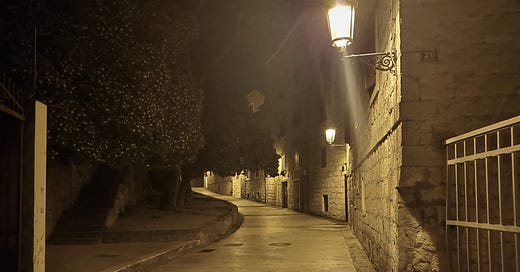


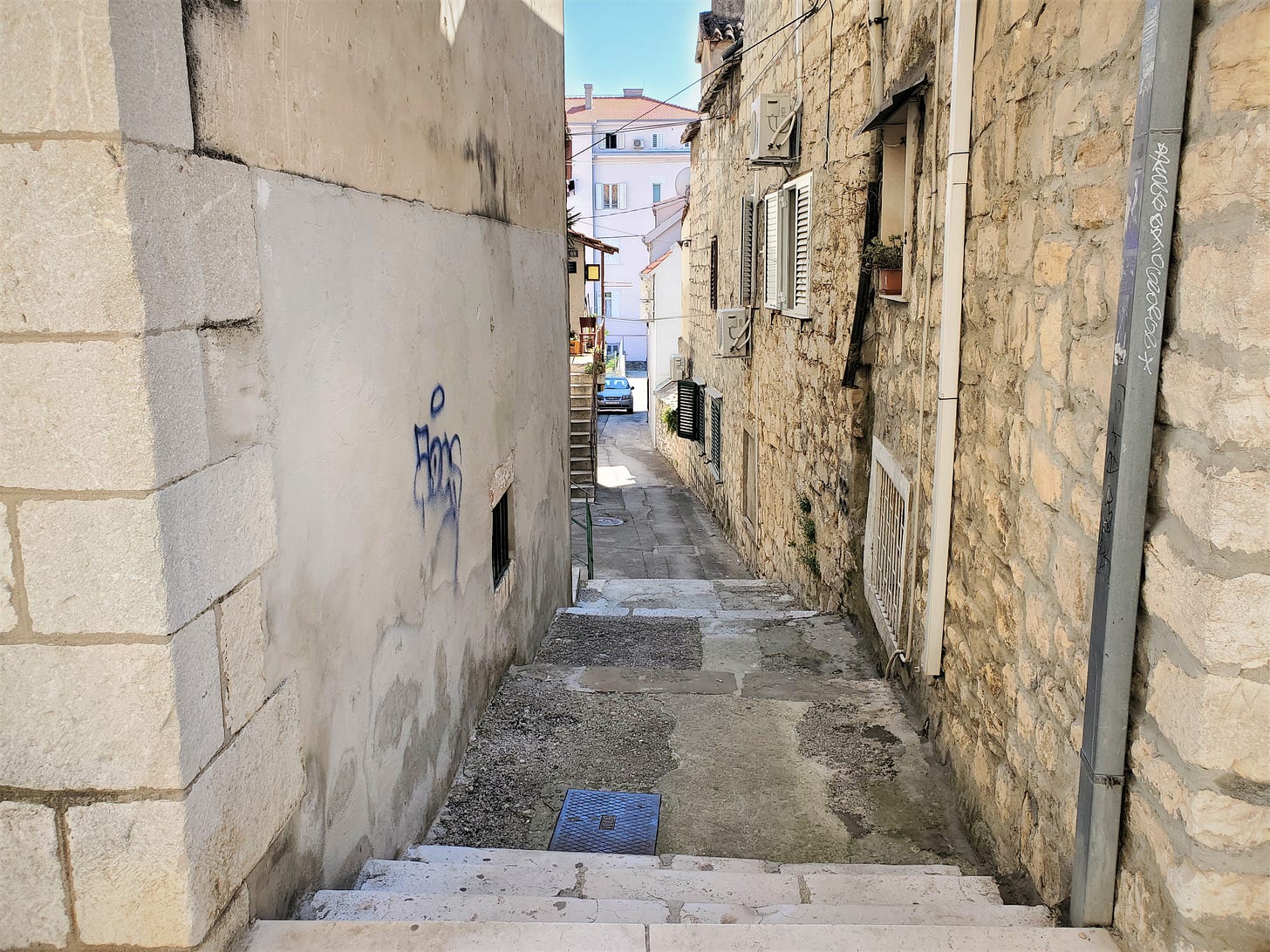
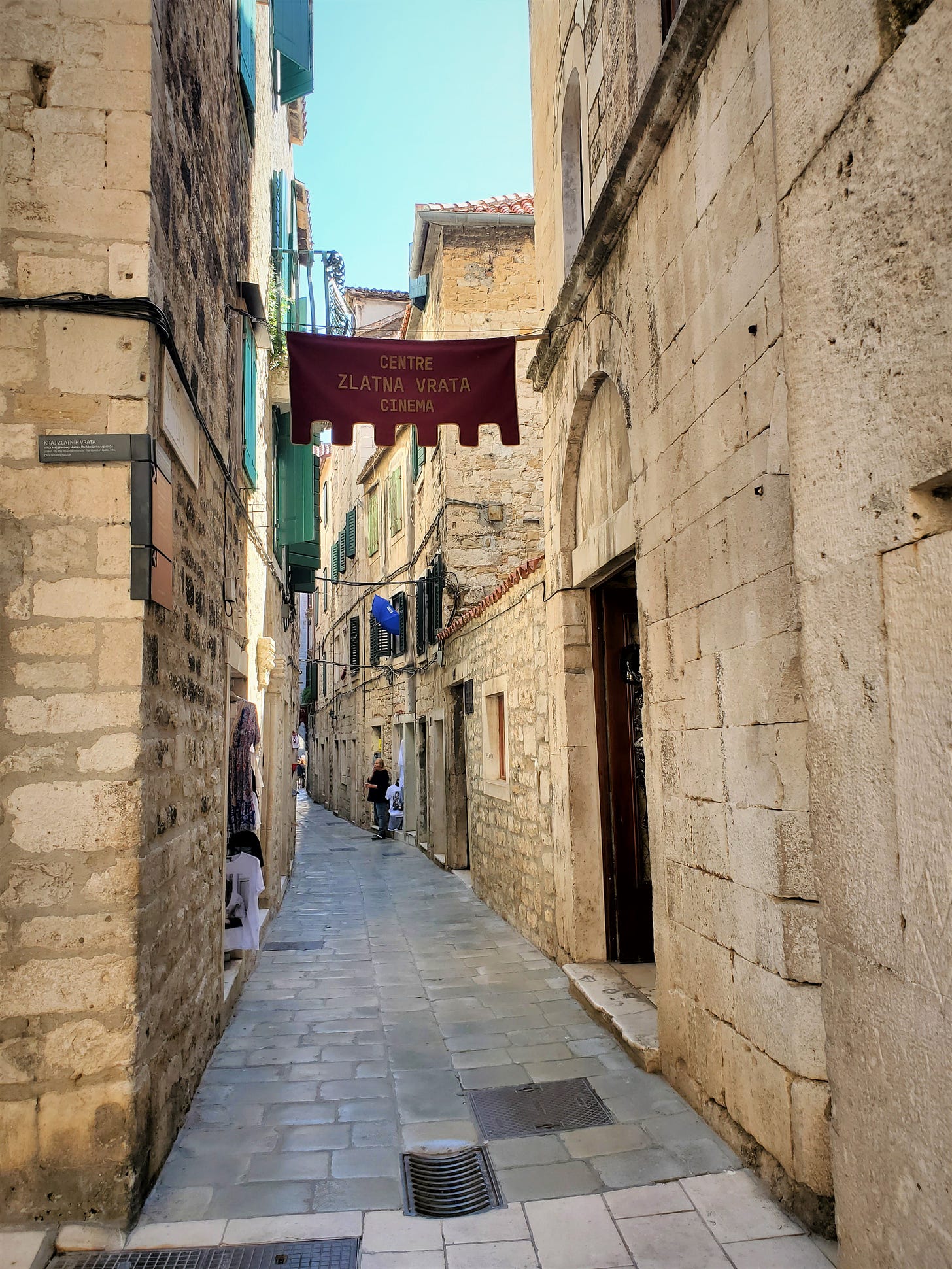


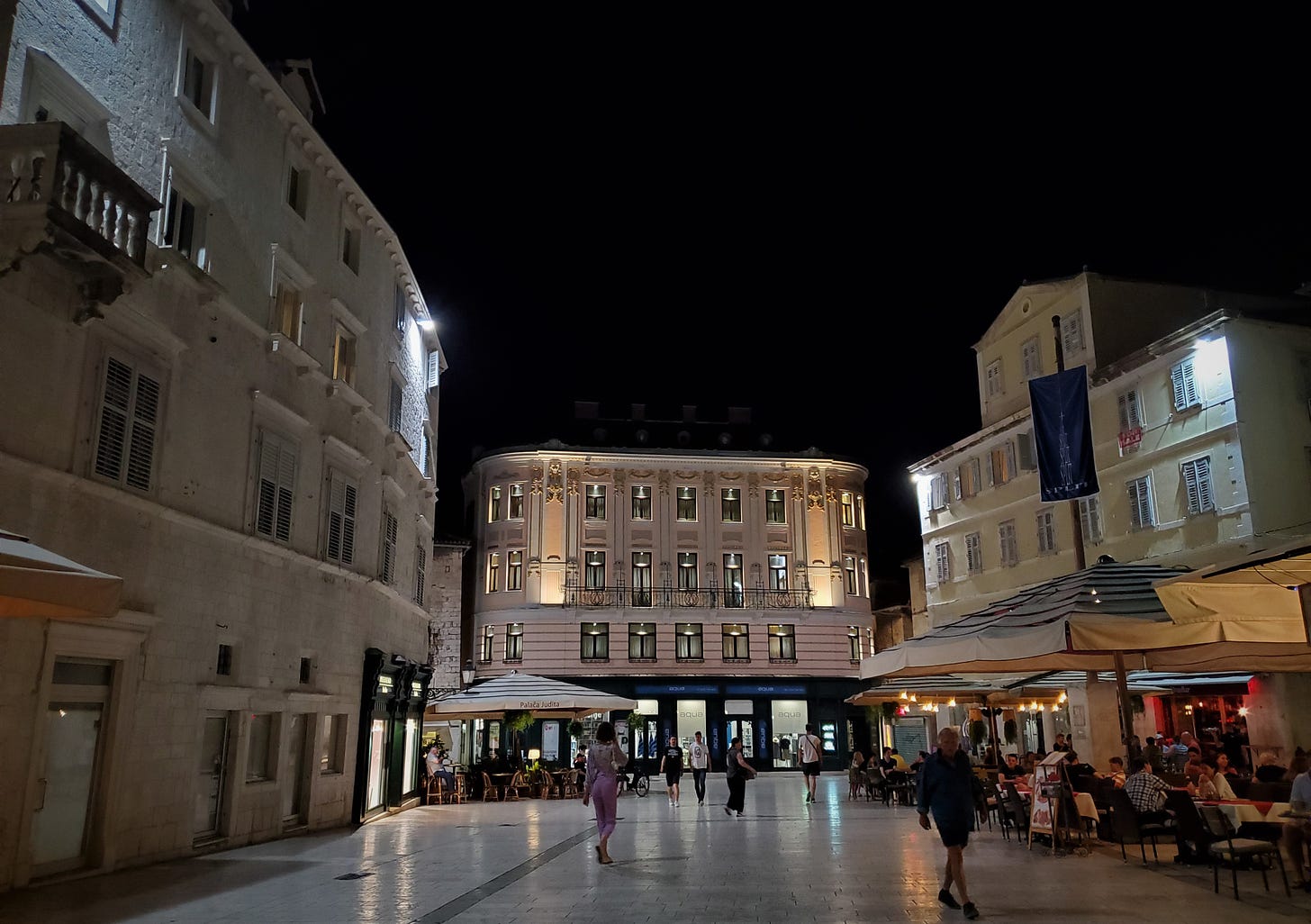
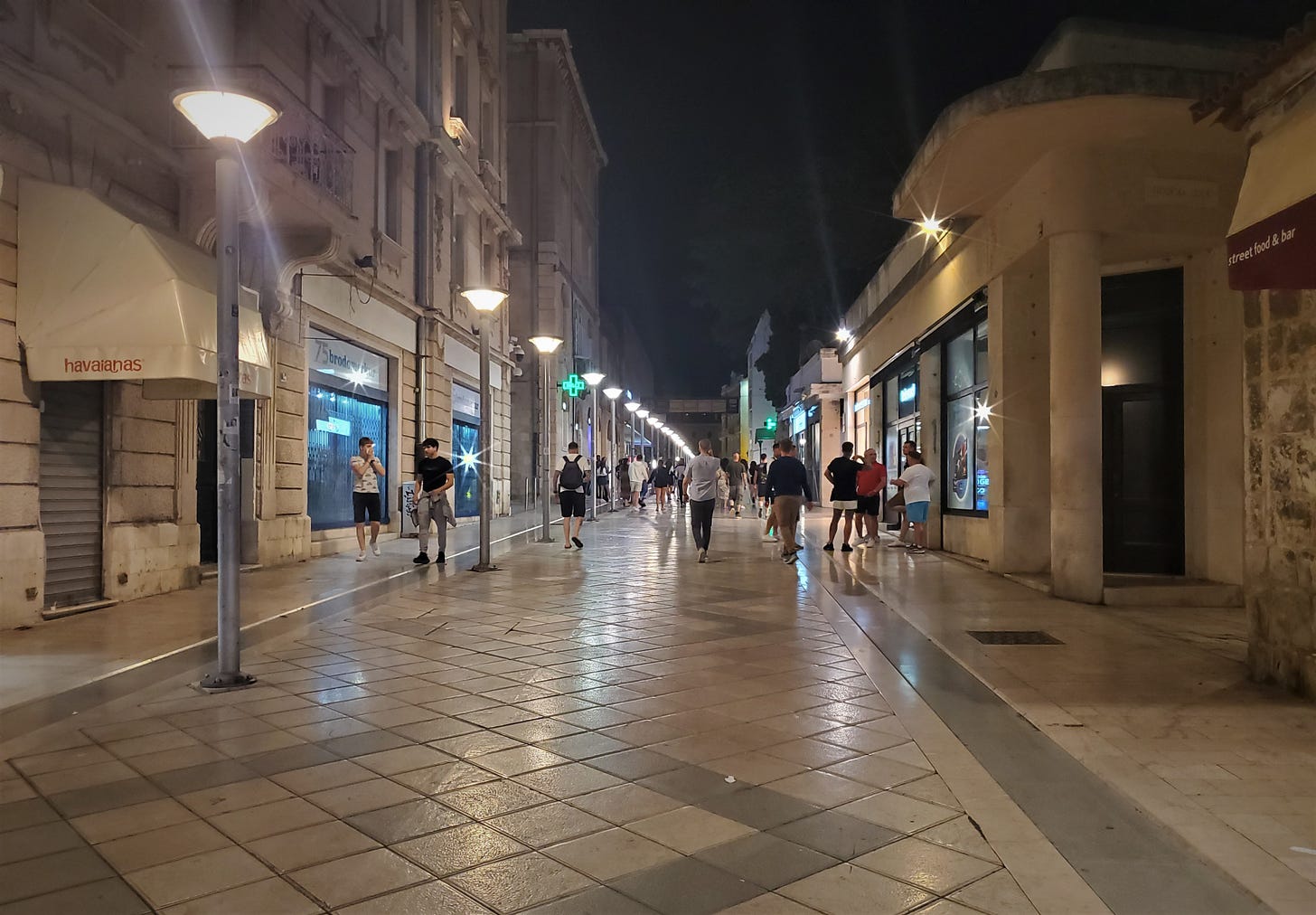
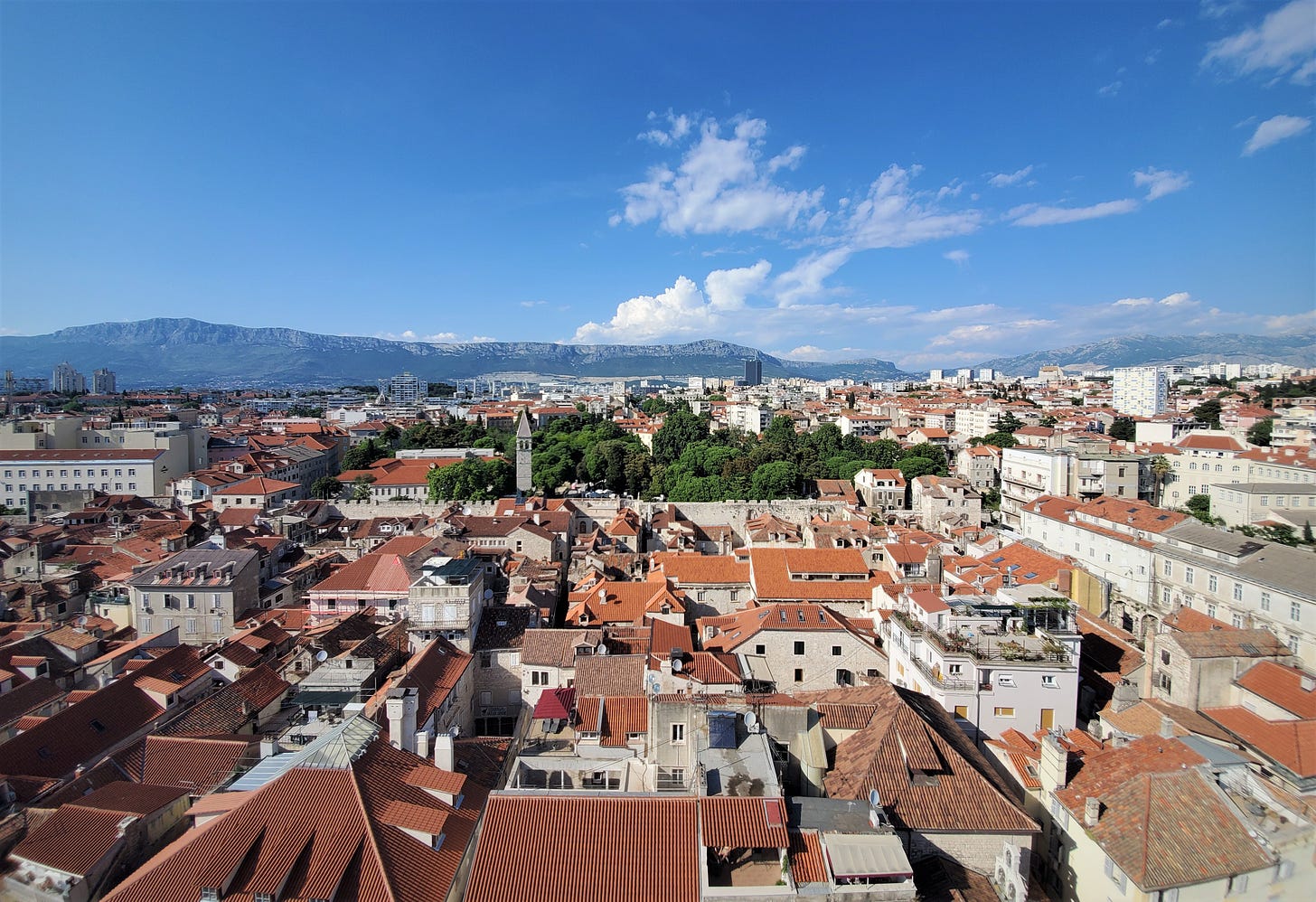
never rent a car in Europe as a matter of course: only do it if you have a specific reason. even the countryside is often highly accessible without one, and in town, the navigation and parking stresses are a continual and major nuisance.
This was encouraging, thanks for sharing. I love these photos and I wonder how America can successfully return. Is it possible? Have the people forgotten what they forgot?